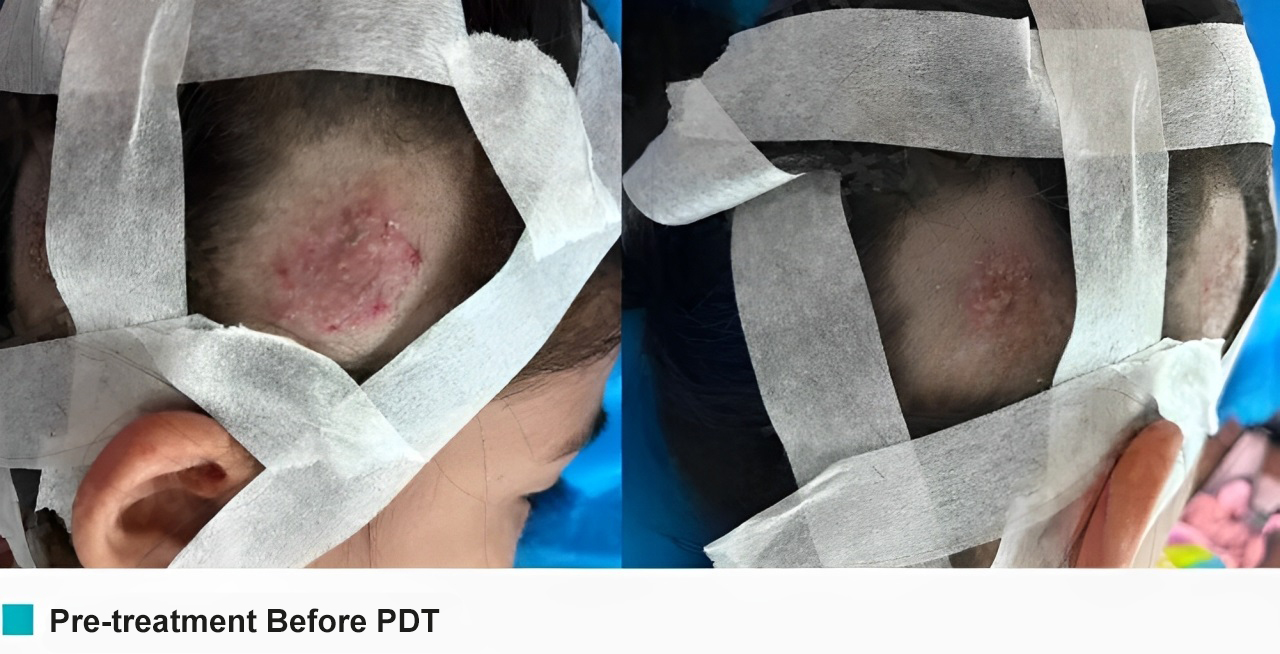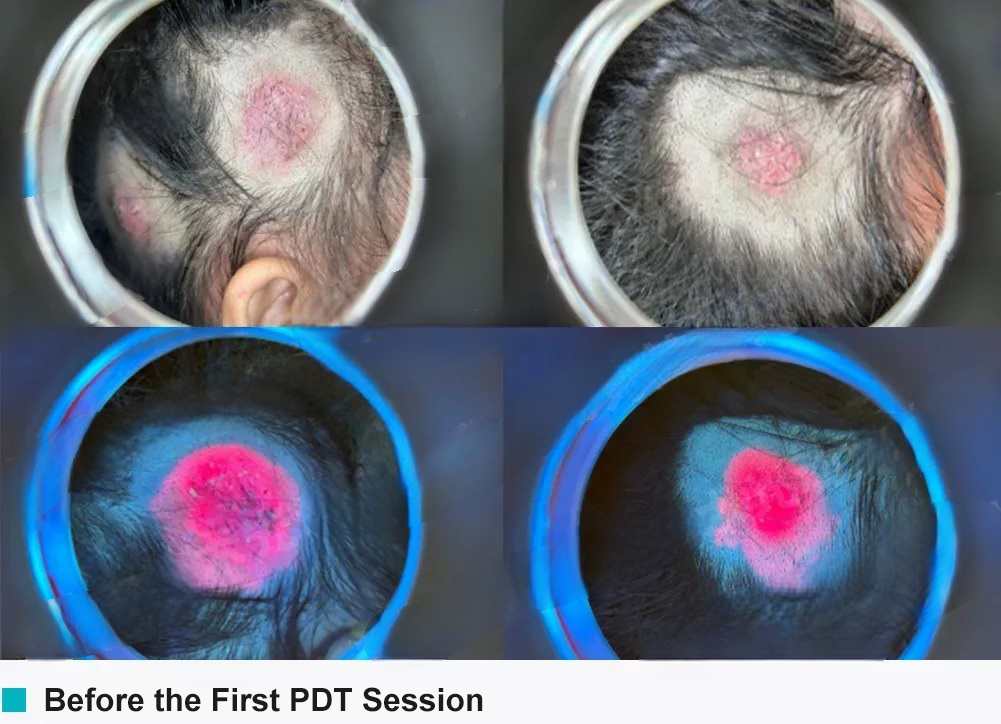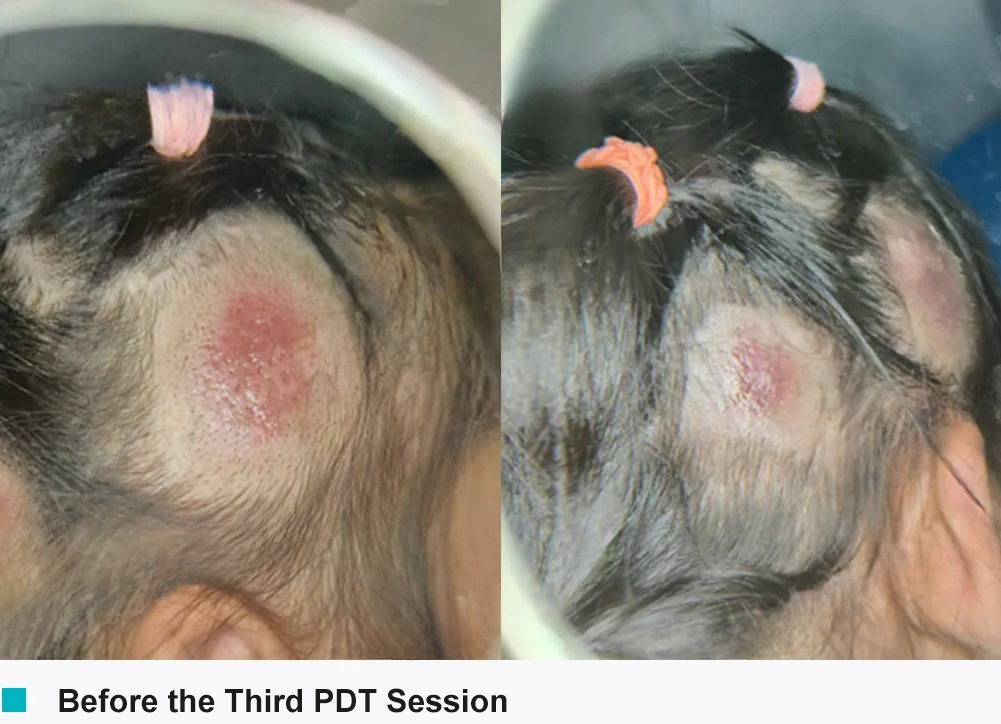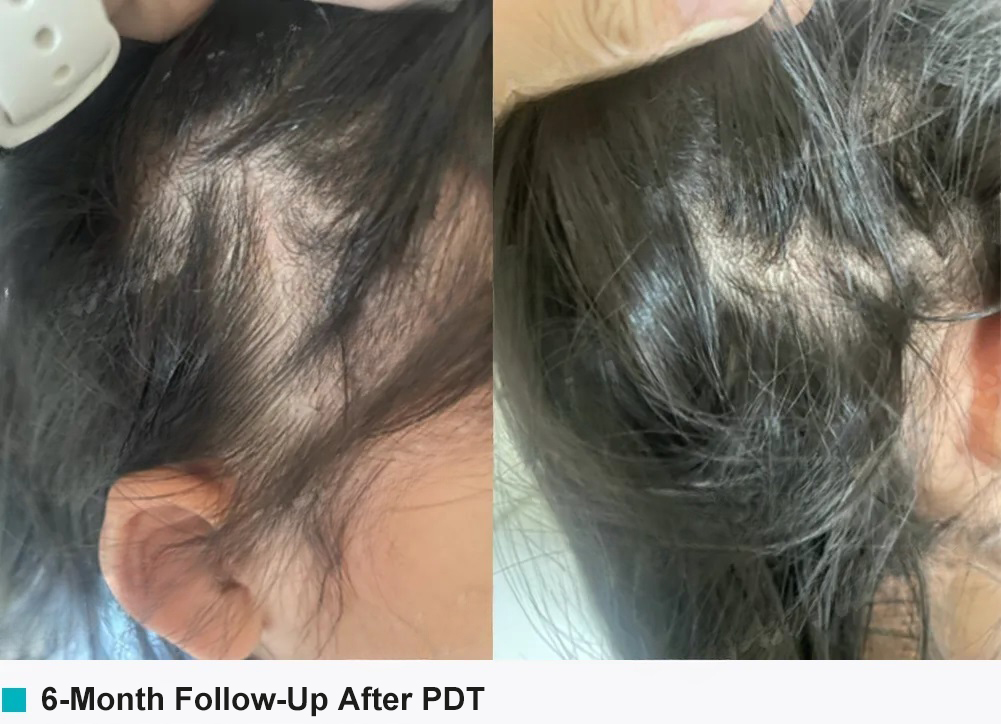
Dual-Approach Treatment of Tinea Capitis in a Child: Microneedling Combined with Photodynamic Therapy Yields Excellent Results
2025-06-18 16:48This pediatric case demonstrates the successful application of photodynamic therapy (PDT) in treating tinea capitis with minimal side effects, avoiding the risks associated with systemic antifungal medications. The patient showed no recurrence at 6-month follow-up, indicating excellent clinical outcomes and strong potential for broader application.
01. Basic Patient Information
Gender: Female
Age: 6 years old
Chief Complaint: Scalp rash with pain and itching for one week
02. Medical History
The patient presented with a one-week history of scalp rash accompanied by itching and pain. The lesion did not improve significantly after topical treatment with Triamcinolone and Econazole cream, and the affected area gradually enlarged, with associated hair loss.
03. Clinical Examination
Physical Examination: Two patchy erythematous areas with papules and pustules measuring approximately 1.5–2 cm in diameter were observed on the right side of the scalp, accompanied by hair loss and broken hairs.
Laboratory Test: Positive fungal microscopy
04. Diagnosis
Diagnosis: Tinea Capitis
05. Treatment Plan
1. Pre-Treatment Preparation
The patient was comforted to reduce anxiety. Parents were instructed to help keep the child calm during application. The affected scalp area was shaved in preparation for treatment.
2. Lesion Preprocessing
After cleaning the lesion with sterile water, larger pustules were drained using a sterile needle. A disposable microneedling roller was gently rolled over the lesion area until mild pinpoint bleeding was observed, enhancing skin permeability.
3. Drug Application
The total drug dose was measured at 354 mg, using 3 vials of Ameluz (ALA). A 10% concentration solution was prepared with thermosensitive gel and applied evenly to the lesion. The area was then occluded:
1st session: 1.5 hours occlusion
2nd & 3rd sessions: 2 hours occlusion each
Treatment durations were adjusted based on patient tolerance.
4. Light Irradiation
The lesion was exposed to red light using a photodynamic therapy device, set at 80 mW/cm² for 20 minutes per session.
06. Case Images
[Images Placeholder – Clinical photos before, during, and after treatment]




07. Follow-Up and Prognosis
One week post-PDT, the patient’s lesion showed resolved erythema and pustules, with visible brown scabs and no adverse reactions.
At 6-month follow-up, the lesion had fully healed, with complete hair regrowth and no recurrence.
Both the patient and her family expressed high satisfaction with the treatment outcome.

